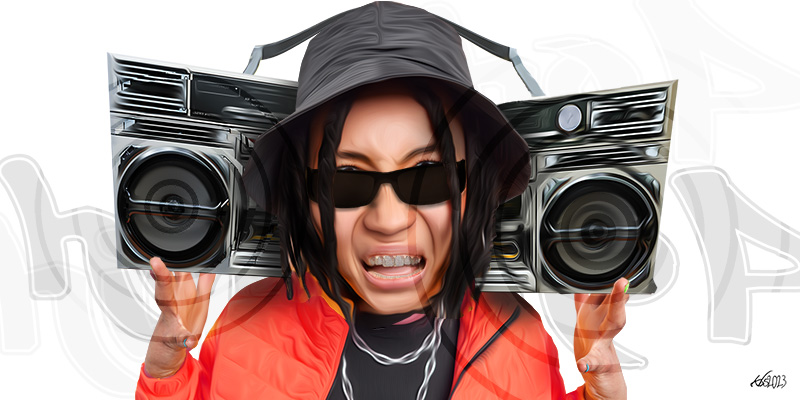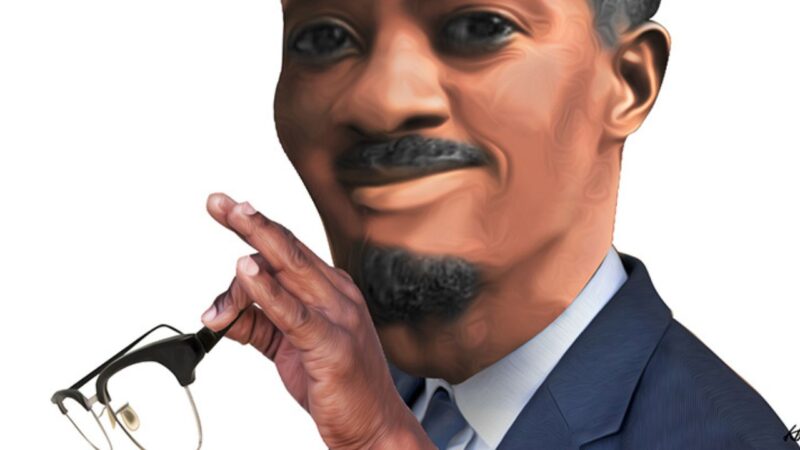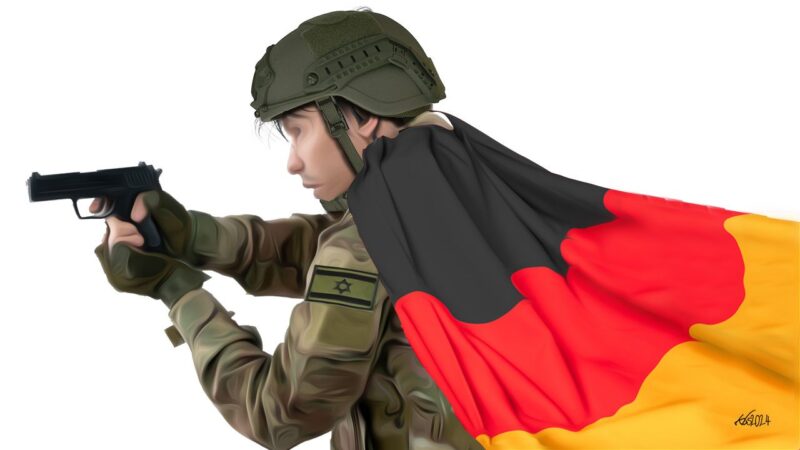Earlier this week, Can I Kick It? came on the radio and as soon as it began, our son Mo* responded.
“Yes you can!” he chimed.
My jaw dropped so hard our neighbours came knocking.
Mo turned seven in January this year and there he was confidently singing along to a song that was released in October 1990 when I was just 10 years old.
“Where did you hear that song?” I asked him.
“In the movie Tom & Jerry.”
He went searching for the movie soundtrack, his little hands deftly navigating our Firestick remote as he explained, wondered out loud, pressed buttons, wrapping it all up with his signature remark, “Let me show you.”
Soon we were watching pigeons lip-synching to the rap song by the American hip-hop group A Tribe Called Quest, one of hip-hop’s enduring acts from the 1990s. Released in October 1990 as the third single from their debut album, People’s Instinctive Travels and the Paths of Rhythm, the song became one of the group’s greatest hits and has been ranked among The 250 Best Songs of the 1990s.
That was an apple-falling moment for me. Yet it wasn’t the first time I was hearing a 90s hip-hop song playing as a soundtrack to a children’s animation or family movie.
Blending musical tastes
I had begun to notice how, in recent times, the animations and family movies we watch with our kids during our Friday movie nights have a tirade of songs that were the soundtrack to my teen years. In recent years, family movies have started incorporating popular music into their soundtracks to appeal to both parents and children. As a result, we are seeing a blending of musical tastes between millennial parents (those born in the late 70s and 80s) and their Gen Alpha children (those born after 2010).
While this departure by animation companies such as DreamWorks, Disney et al from using orchestral music has taken place over the last two decades, it was the movie series Shrek that pioneered the integration of pop music as the soundtrack to animated films:
“Shrek introduced a new element to give the film a unique feel. The film used pop music and other Oldies to make the story more forward. Covers of songs like “On the Road Again” and “Try a Little Tenderness” were integrated in the film’s score. The band Smash Mouth‘s song “All Star” gained massive popularity due to its usage in the film’s opening credits. As the film was about to be completed, Katzenberg suggested to the filmmakers to redo the film’s ending to “go out with a big laugh”; instead of ending the film with just a storybook closing over Shrek and Fiona as they ride off into the sunset, they decided to add a song “I’m a Believer” covered by Smash Mouth and show all the fairytale creatures in the film.”
In 2002, the green ogre movie made history at the box office by grossing over US$491 million and at the 74th Oscar Academy Awards by winning the debut Best Animated Feature category. This was epochal for animated movies.
From then on, that winning formula has completely transformed how animation films—once the preserve of children and considered too kiddish for adults—are marketed and watched.
Nowadays, animated films are family movies.
The evolution of rap music as a soundtrack to animated films
Whereas, since Shrek, movie soundtracks have been drawn mainly from pop music and oldies, what I have been noticing with the current crop of animated films—from The Secret Life of Pets to Angry Birds, to Trolls to Turbo and a host of others—is the increasing use of rap music in animated film scores.
Take The Secret Life of Pets 2, a 2009 computer-animated comedy film produced by Illumination. The soundtrack includes Empire State Of Mind by Jay-Z featuring Alicia Keys, Fantastic Voyage by Coolio and Ante Up (Robbin Hoodz Theory) by M.O.P. (How they were able to come up with a clean version of this song is still beyond me. If you don’t believe me, go on and listen to the original then let’s compare notes. )
It was the movie series Shrek that pioneered the integration of pop music as the soundtrack to animated films.
What truly intrigued me, so much so that it prompted this article, was how rap music has gone from being a genre so abhorred by parents in the 80s and 90s for its profanity that rap CDs had to have Parental Advisory stickers on them, to how far animation production companies are pushing the envelope as they cast their target audience net wide to capture millennial parents.
And it’s not just the music that has suddenly become a cultural phenomenon and a barometer of how cool an animated movie is to warrant the eyeballs of both adults and children; it’s the voice-over actors as well. I never thought I’d live to see the day when Snoop Dogg and Ice Cube would lend their voices to an animation film.
As someone who grew up in the golden age of hip-hop, rap music sure has come a long way in the public consciousness and what is “acceptable” for our children’s ears. But “I ain’t mad at Cha!” animation companies, to quote the words of the great philosopher, poet and rap legend Tupac.
I can attest to how effective the use of rap-animated film scores has become; my old-school hits from the 90s and early 2000s are making a comeback and taking on a whole new meaning during movie nights in our home.
One of the most significant benefits of this trend is the ability for parents and children to sing along to the same songs. This shared experience creates a connection and helps to bridge the generation gap. When families can sing and dance together, it creates a bond that is hard to break. For example, the songs That’s the Sound of the Police! from Angry Birds and ATCQ’s Can I Kick It? have become favourites in our family. The catchy tune and upbeat tempo are perfect for dancing and singing along to.
A Tribe Called Quest has played a significant role in demonstrating the versatility of this art form while at the same time dispelling the notion that rap has to be profane or misogynistic to sell. Together with De La Soul, A Tribe Called Quest were among the pioneers of conscious rap and whose music brought them mainstream success.
All this came back to me as we watched the Tom & Jerry animated film and our children learned the song for the first time.
Such moments have been recurring often.
While our daughters and I were washing the car a few weeks ago, the song Runnin’ (Can’t Keep Running Away) came on. As soon as the song began, our 10-year-old daughter Neema* began singing along cheerfully, her head bopping to the beat as she enthusiastically wiped the car seats. I dropped my teeth. Clearly, Neema was not hearing this for the first, second or third time; she knew the chorus, word for word.
Runnin’ is a song by the hip-hop group Pharcyde produced by J Dilla. It was released in 1995.
Then Neema shouted over the music blasting out of our bluetooth speakerphone: “Mum that is the song that was in Tag”. She didn’t wait for me to ask what Tag was before going on tell me about the movie and how it follows a group of kids who suddenly become adults but are still playing the game of tag.
My old-school hits from the 90s and early 2000s are making a comeback and taking on a whole new meaning during movie nights in our home.
And she was not done yet. “Mum,” she continued “ that guy is also the one who has sung the song A Lovely Day in the movie The Secret Life of Pets.”
You should have seen us as we rapped to the beat.
Using rap to teach life lessons
As a millennial parent bringing up a generation of children that learn to hack your phone password before they have even learned their ABCs, I have learnt (the hard way ) that I can’t use my mum’s parenting handbook. Instilling life lessons has not been any different.
Music is something that my husband Richard discovered is a great way of creating bonds with our children. Beyond letting our musical tastes rub off on our children, music has become an effective tool in imparting our own philosophies and values.
Richard and I are hip-hop heads—on some of our dates we would walk from downtown to the British Council parking lot in Upper Hill for the monthly WAPI-Words And Pictures hip-hop gig that Buddha Blaze & Muki began back in early 2000.
Three children later, and in our quest to find creative ways to our parenting, we found ourselves naturally gravitating towards music. We’ve always been careful not to expose our young ones to rap music’s underbelly—the profanity and the misogyny. It’s been an extreme sport that, with time, has enabled us to bond over the poetic and creative aspects that make hip-hop music such a unique and loved art form. Now there is always that earworm that the children first heard in an animation film to add to the soundtrack of our family life.
The song Until We Rich by rappers Ice Cube and Krayzie Bone is our current household anthem. It recently dislodged I Know I Can by Nas that followed Ms Jackson by Outkast. While these songs have not scored any animation, they resonate with our children and we have used them to teach such lessons as knowing your passion—“Getting your grind right”, keeping your focus on the things you want, “always being on the mission to get what you don’t got”—and the importance of not giving up; “The struggle it don’t stop until we drop”. Our favourite line is “But the best thing in life is health, be yourself playa”, which emphasizes gratitude for the little things in life and the importance of being authentic.
As soon as the song began, our 10-year-old daughter Neema began singing along cheerfully, her head bopping to the beat as she enthusiastically wiped the car seats.
I know I Can, one of the most laid-back songs and one that Nas wrote specifically for children, is a great anthem loaded with words of self-affirmation, caution against drugs and keeping the wrong company, lessons on Afrocentrism and black pride and the importance of learning how to read and write. He mentions Timbuktu and Kush about which they are being taught in their history lessons.
And so, as millennial parents, perhaps we need not look too far as we throw out every parenting tool in our parent’s toolbox that the digital age has rendered inadequate.
The next time you are hurdled together in front of the TV or the big screen watching the latest animated film and a familiar tune from your teen years comes on, whether Old School Hip Hop, RnB, 60s or 70s Motown, make it a thing. Sing and dance along together. Reminisce, share how old you were when the song first came out and what memories it evokes. And if the song carries gems of life, lessons of value, find light-hearted ways of discussing the lyrics.
–
*Names have been changed








